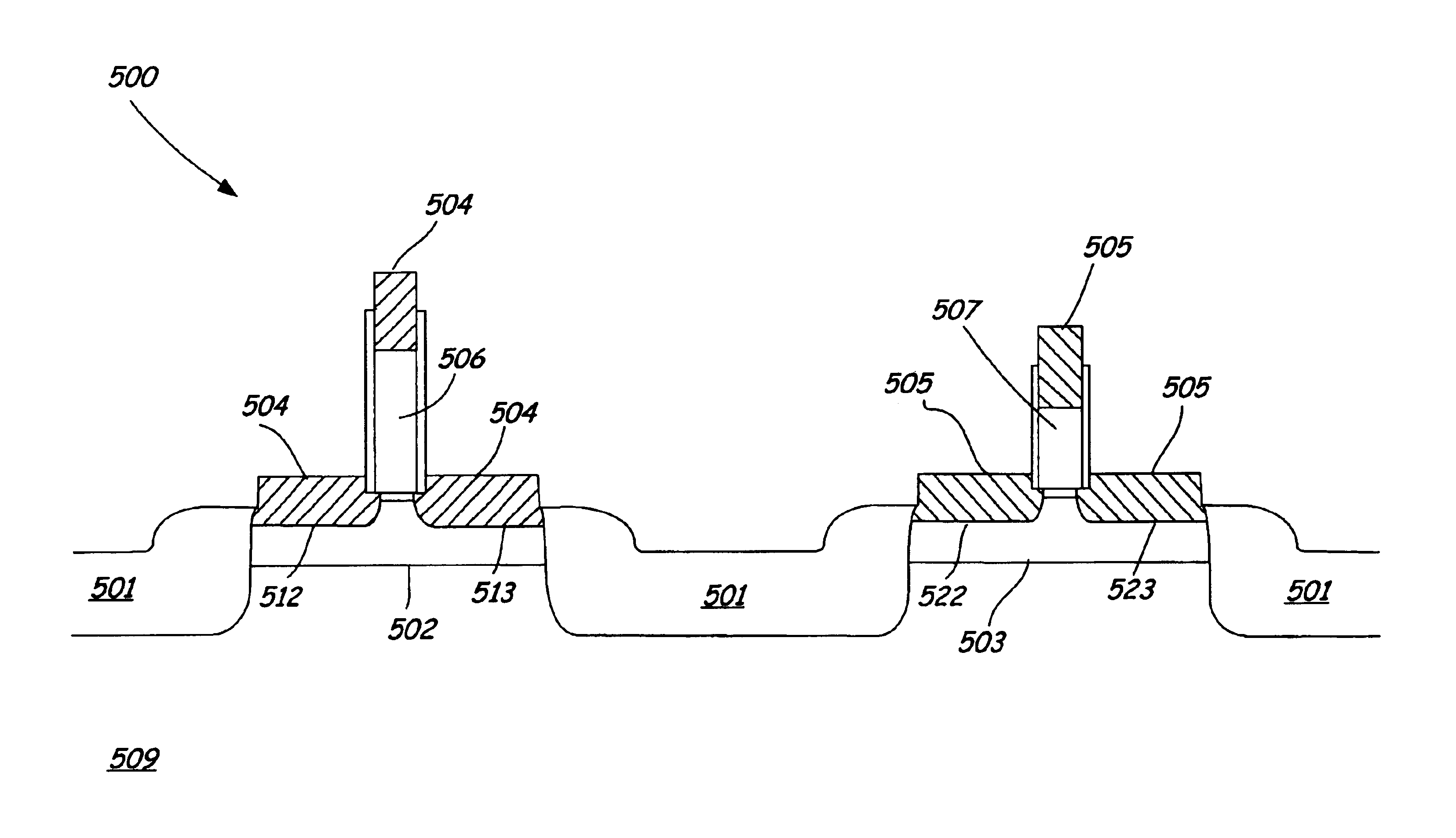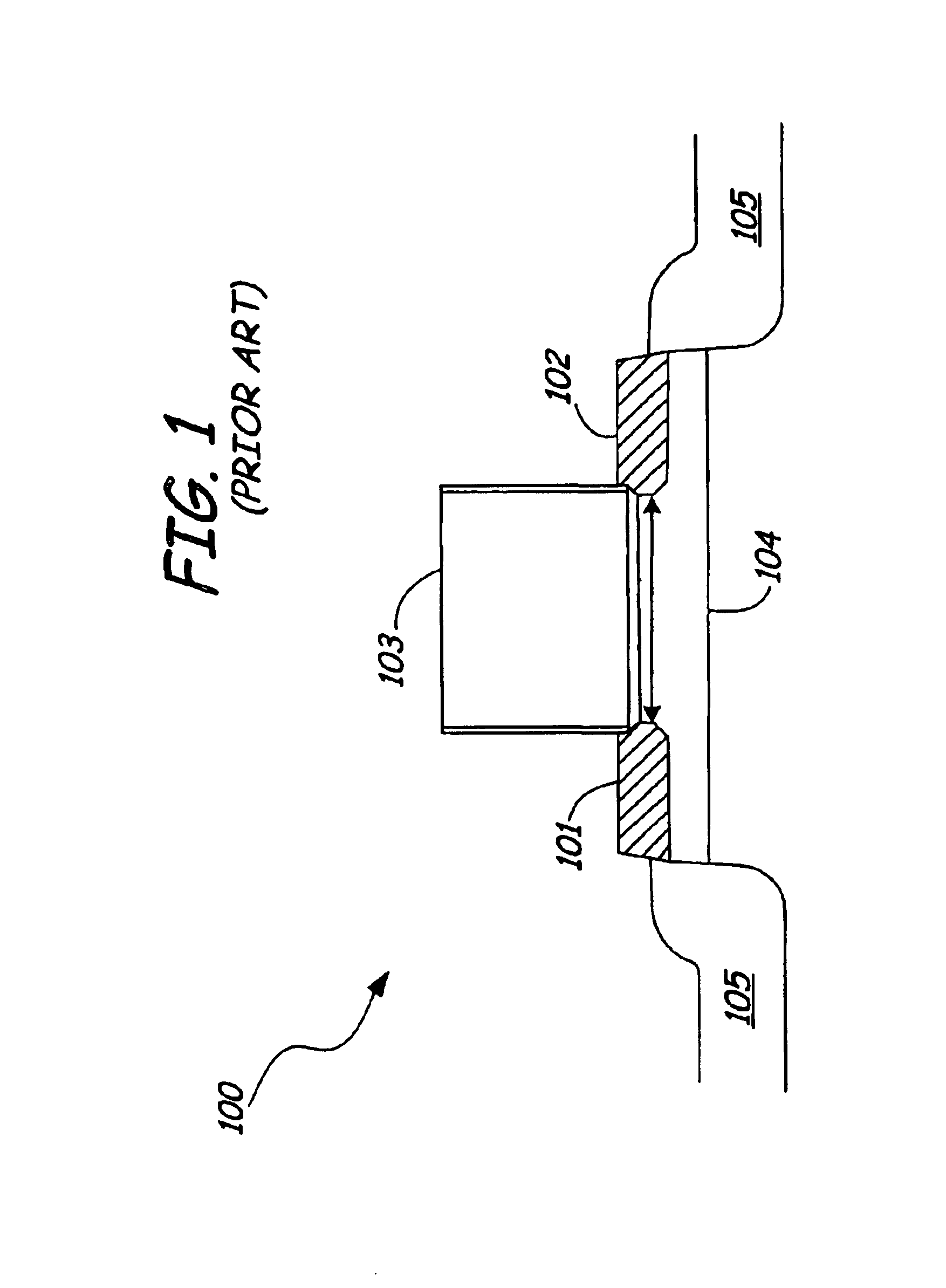Schottky barrier CMOS fabrication method
a technology of cmos and fabrication method, which is applied in the direction of semiconductor devices, electrical equipment, transistors, etc., can solve the problems of affecting the overall circuit power dissipation of most applications, affecting the overall circuit power dissipation of the circuit, and driving relatively large amounts of curren
- Summary
- Abstract
- Description
- Claims
- Application Information
AI Technical Summary
Benefits of technology
Problems solved by technology
Method used
Image
Examples
Embodiment Construction
[0045]FIG. 5 shows an exemplary embodiment of the present invention, as exemplified by two final complementary MOSFET structures 500. This embodiment comprises a Schottky barrier N-channel device fabricated with Erbium Silicide 504 for the source / drain regions, and a Schottky barrier P-channel device fabricated with Platinum Silicide 505. Indium 502 and Arsenic 503 layers may be used as the channel dopants for the N-channel and P-channel devices respectively. The gate electrodes are fabricated from in-situ Phosphorous and Boron doped polysilicon films for the N-type 506 and P-type 507 devices respectively. Devices are separated from each other by a field oxide 501 that works in conjunction with the channel and substrate dopants to electrically isolate the devices from each other. The Schottky (or Schottky-like) barriers 512, 513, 522, 523) that exist along the interface of the corresponding metal source / drain 504, 505 and the silicon substrate 509 act as an inherent pocket or halo i...
PUM
 Login to View More
Login to View More Abstract
Description
Claims
Application Information
 Login to View More
Login to View More - R&D
- Intellectual Property
- Life Sciences
- Materials
- Tech Scout
- Unparalleled Data Quality
- Higher Quality Content
- 60% Fewer Hallucinations
Browse by: Latest US Patents, China's latest patents, Technical Efficacy Thesaurus, Application Domain, Technology Topic, Popular Technical Reports.
© 2025 PatSnap. All rights reserved.Legal|Privacy policy|Modern Slavery Act Transparency Statement|Sitemap|About US| Contact US: help@patsnap.com



